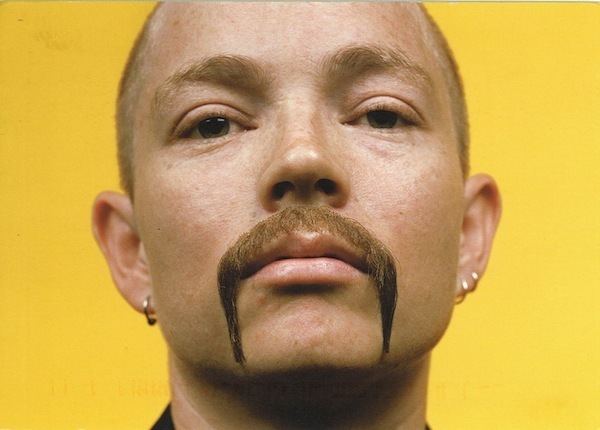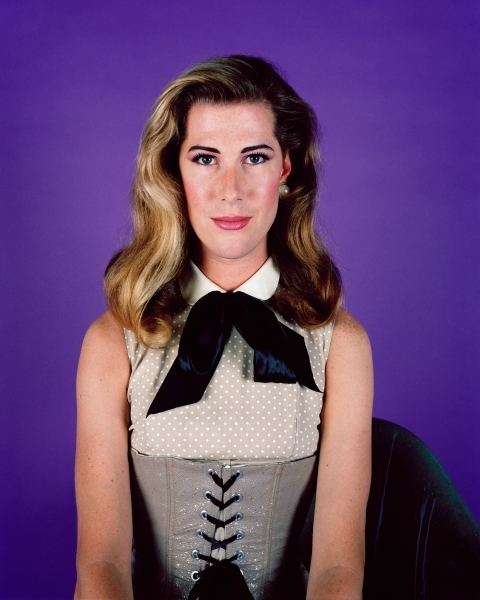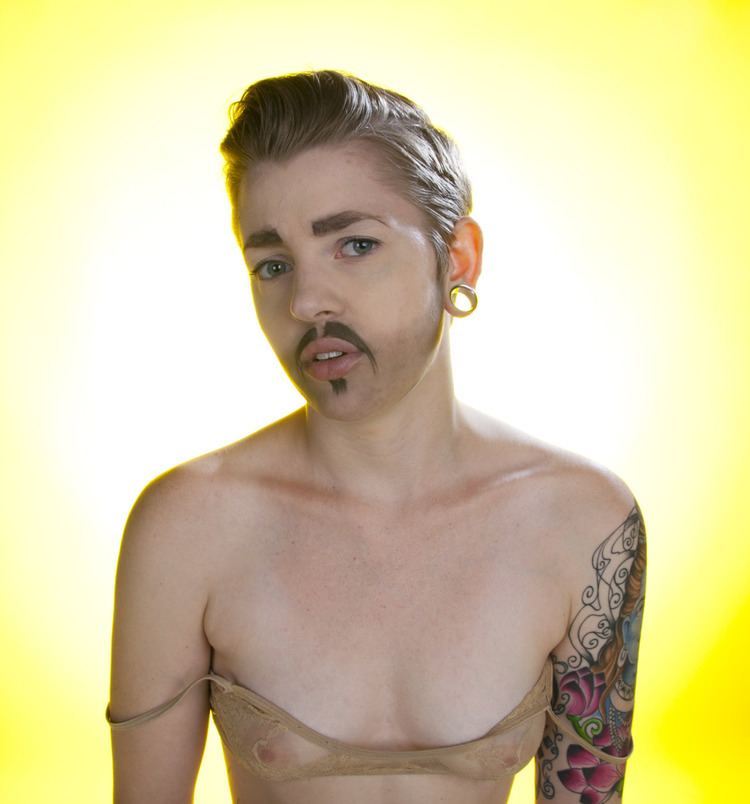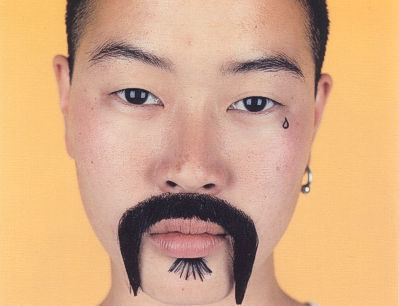Name Catherine Opie Role Photographer | Books 700 Nimes Road Movies Same Difference | |
 | ||
People also search for Lisa Udelson, Bruce Robertson, Zoe Leonard, Kestrin Pantera Education San Francisco Art Institute, California Institute of the Arts | ||
06 voice of the photographer catherine opie
Catherine Opie (born 1961) is an American fine-art photographer. She studies the relationships between mainstream and infrequent society, with a large emphasis on sexual identity, specializing in portraiture, studio, and landscape photography. Through photography Opie documents the connections between the individual and the space inhabited. She lives and works in West Adams, Los Angeles. She is well known for her work of portraits exploring the Los Angeles leather-dyke community. Opie is currently a tenured professor of photography at University of California at Los Angeles (UCLA).
Contents
- 06 voice of the photographer catherine opie
- Catherine opie sandusky ohio art21 exclusive
- Life
- Work
- Publications
- Exhibitions
- Awards
- References
Catherine opie sandusky ohio art21 exclusive
Life

Opie was influenced early in life by photographer Lewis Hine. At the age of nine she received a Kodak Instamatic camera, immediately capturing her family and community. Opie spent her early childhood in Ohio. She completed a Masters of Fine Arts from the California Institute of the Arts in 1988. Her thesis project Master Plan (1986–88) examined the planned communities of Valencia, California, from construction sites and advertisement schemes, to homeowner regulations and the domestic interiors of residents' homes. In 1988 Opie moved to Los Angeles, California and began working as an artist, supported herself by accepting a job as a lab technician at the University of California, Irvine. Opie and her companion, painter Julie Burleigh, constructed working studios in the backyard of their home in South Central Los Angeles.
Work

Opie's work is characterized by a combination of formal concerns, a variety of printing technologies, references to art history, and social/political commentary. An example of formal concerns include addressing issues of the horizon line in the "ice house" and "surfer" series. She has printed photographs using chromochrome, iris prints, Polaroids, and silver photogravure. Examples of art history references include the use of bright color backgrounds in portraits which reference the work of Hans Holbein and the full body frontal portraits that reference August Sander. Opie's older work from the 1990s could be related to the traditions of Renaissance and Baroque art: placing her subjects central to the composition, utilizing stark, dramatic light source, allowing her subjects to fall in front of rich backgrounds; Opie's images relay a more aggressive undertone. Certain art historical attributes throughout her images, themes and/or icon's that have been referenced throughout art history. Use of certain symbols in her works have allowed these portraits to sit separately from any of her previous works. The portraits, for instance, from Opie's more recent work in the 2012, the image David, utilizes blood. The symbolism used in this work is recognized as a reoccurring statement for Opie, personally and allegorically. These images convey symbolic references to the celebration, embracing and remembrance of the shift and personal relationship with one's body. Unlike other artists, Opie grounds her work in personal relationships, meanings and histories; however, this unfortunately precedent's the ability for one to read these images outside of the intimate content. Most of Opie's work sits in this very personal community, allowing for selective perceptions. Where some viewers may not understand certain allegories and symbols within her work, individuals who know Catherine's work well can very identify specific conceptual or metaphorical statements within the images themselves. Where these images demand to be read as allegories, the performative aspect of this work differs from previous work Catherine has produced. Opie's earlier work relays more heavily on documentary photography as opposed to allegorical, yet still provide a stark relationship to her investigation and use of powerful iconography throughout the years.

A common social/political theme in her work is the concept of community. Opie has investigated aspects of community, making portraits of many groups including LGBT community; surfers; and most recently high school football players. Opie is interested in how identities are shaped by our surrounding architecture. Her work is informed by her identity as an out lesbian. Her works balance personal and political. Her assertive portraits bring queers to a forefront that is normally silenced by societal norms.
Opie first came to be known with "Being and Having" (1991) and "Portraits" (1993–1997), which portray queer communities in Los Angeles and San Francisco. Opie focused heavily on her surrounding environment during her time in Los Angeles in her works "In Houses", "Freeways" and "Mini-malls". "In Houses" (1995–1996) shifted towards domestic architecture through portraits of Beverly Hills and Bel Air mansions. "Freeways" (1994–1995), depicts the Los Angeles highway system in black and white, which was unique to her usual style. "Mini-malls" (1997–1998) concluded her works on iconic images of Los Angeles culture by depicting billboards as well as identifying various ethnic groups in shopping centers.
Being and Having (1991) for example, convey strong ideals and perceptions based among persons of the LGBT community. These images reference gender, age, race and identity; all constructed surrounding identity. This body of work similarly plays with performative aspects and play. These works read as iconography, themselves. Catherine Opie has referenced problems of visibility; where the reference to Renaissance paintings in her images declare the individuals as saints or characters. Opies portraits document, celebrate and protect the community and individuals in which she photographs.
This Los Angeles focused series sparked her ongoing project "American Cities" (1997–present) which is a collection of panoramic black-and-white photos of quintessential American cities. This series is similar to an earlier work of hers, "Domestic" (1995–1998) which documented her 2-month RV road trip, portraying lesbian families engaging in everyday house- hold activities across the country.
Drawing inspiration from transgressive photography of Robert Mapplethorpe, Nan Goldin, and sex radicals, who provided a space for liberals and feminists, Opie has also done work ranging from the studies of master-plan communities to S/M erotica for lesbian owned sex magazines. Her portraits often document the queer community.
At the Hammer Museum, Opie was on the first Artist Council (a series of sessions with curators and museum administrators) and served on the board of overseers. Along with fellow artists John Baldessari, Barbara Kruger and Ed Ruscha, Opie served as member of the board of the Museum of Contemporary Art, Los Angeles. In 2012, she and the others resigned; however, they joined the museum's 14-member search committee for a new director after Jeffrey Deitch's resignation in 2013. Opie returned in support of the museum's new director, Philippe Vergne, in 2014. She is also on the board of the Andy Warhol Foundation.
Along with Richard Hawkins, Opie curated a selection of work by the late artist Tony Greene at the 2014 Whitney Biennial in New York.
